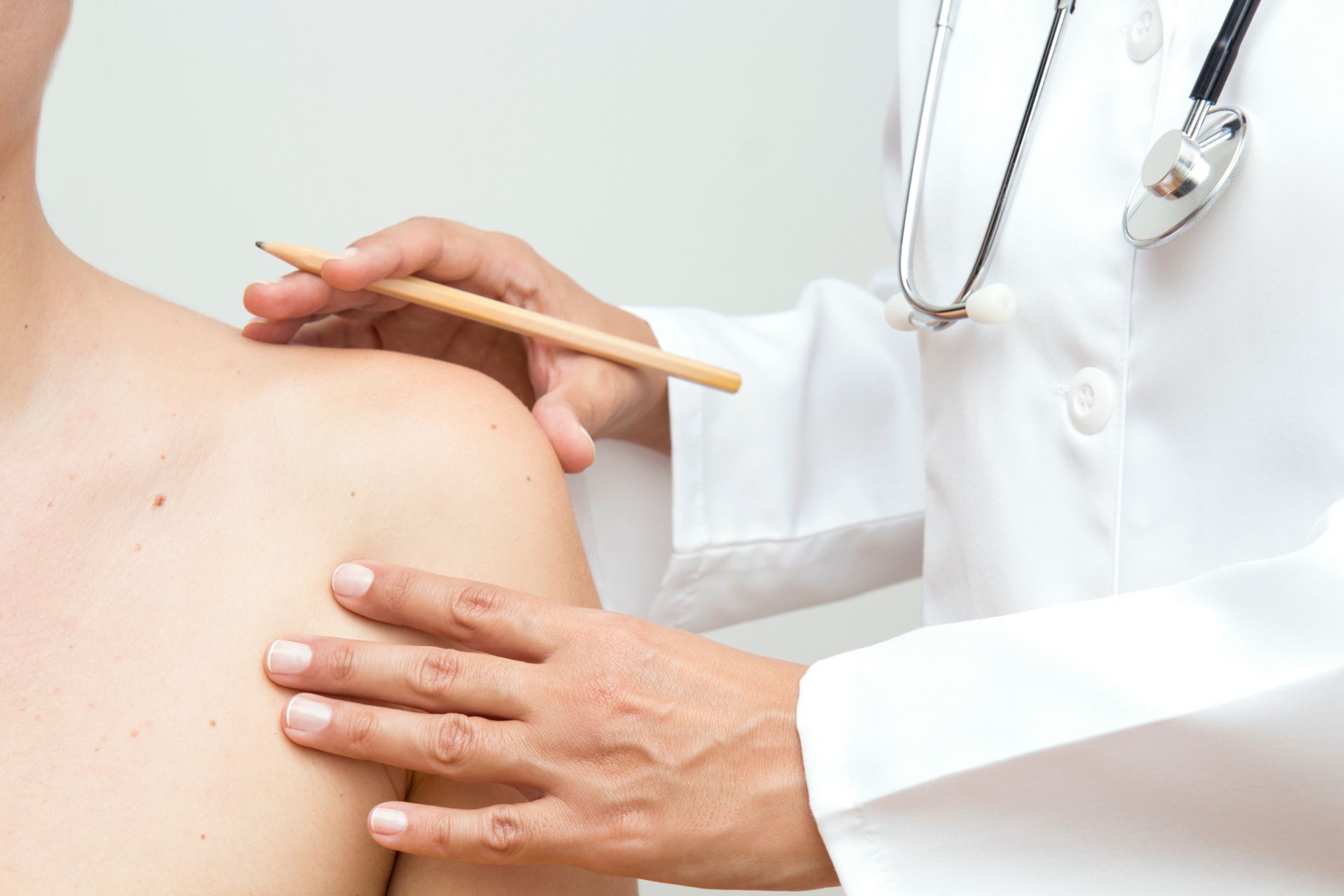Skin cancers are a speciality of the Skin Hospital. Our experts cover the entire clinical pathway from diagnosis to removal and follow-up.
The commonest skin cancers are melanomas, basal cell carcinomas and squamous cell carcinomas
Skin cancers are medically divided into melanomas and non-melanomas, the most common forms of the latter being basal cell carcinoma and squamous cell carcinoma. There are also other rarer skin cancers, all of which are treatable.
The patient themselves does not need to speculate on the problem. Treatment can always be sought for the same reasons: if any changes on the skin give cause for concern, it is advisable to have them examined by a dermatologist.
Book an appointment with a skin cancer specialist >
Early detection reduces the need for treatment – take heed of worrying signs
Skin cancers manifest as changes on the skin that can take many forms, and can be difficult to identify. However, there are certain signs that indicate the need to consult a dermatologist:
- a wound that will not heal should be treated as skin cancer until proven otherwise
- a mole has just appeared, or an existing mole is changing in appearance, enlarging or showing symptoms
- a mole or skin lesion is irregular and different from others
Squamous cell carcinoma, basal cell carcinoma and other non-melanoma tumours typically occur on parts of the skin that are exposed to the sun, including the head, face or backs of the hands. Melanomas can appear anywhere on the body, and are often pigmented.
The earlier skin cancer is detected, the easier it is to treat. Pre-cancerous stages of basal cell carcinoma and squamous cell carcinoma, such as actinic (or solar) keratosis, can sometimes be treated with cryotherapy or photodynamic therapy (PDT) therapy, even without surgery. A small mole that is causing concern can be removed in as little as 15-minutes.
The primary treatment for skin cancer is removal, with a sufficient margin
Treatment of skin cancers starts with identifying the skin lesion. The dermatologist will examine the moles and skin lesions visually, with the aid of a dermatoscope if needed. Direct removal of suspicious moles is recommended, and the removed skin lesion is always sent to a pathologist for examination to confirm the diagnosis.
The first-phase treatment is always removal of the skin cancer by surgery, including the removal of a sufficient margin. This means that a sufficient amount of surrounding healthy tissue is removed so as to ensure that the cancer has been safely removed. An adequate margin around a skin cancer is usually between 0.5 cm and 2 cm of healthy skin.
The skin lesion is usually completely removed
Most commonly, a skin lesion is removed completely at once, but in the case of a larger area, a biopsy may first be taken before the dermatologist proceeds with removal of the lesion. The pathological examination will confirm whether the skin lesion is cancerous.
If the sample does turn out to be malignant, the pathologist may recommend further excision of the skin tissue. After any further surgery, the removed tissue is sent back to the pathologist to determine whether the cancer has been completely removed.
Whereas most operations can be performed under local anaesthetic, more extensive removals may require general anaesthetic or sedation. The option of general anaesthetic is always available to patients.
Major excisions require skin reconstruction
In some cases, treatment of skin cancer requires the removal of an area of skin so large that the wound cannot be sutured closed without any additional measures. The person may then need skin graft surgery or skin flap surgery to cover the wound.
In a skin graft, skin is taken from another part of the body, most commonly from the supraclavicular area or groin, and used to replace the skin where the tumour was removed from. In skin flap surgery, excess skin adjacent to the area of removal is utilised to cover the wound.
In these cases, the plastic surgeon will always explain the procedure in more detail and recommend the most appropriate treatment. The procedure and the necessary aftercare are always discussed in detail before the surgery.
Follow-up treatment is rarely needed: sentinel lymph node biopsy reveals the extent of spread
Surgical treatment is enough for most skin cancers, but sometimes further treatment is needed. Among such cases are melanomas that extend more than one millimetre into the skin. These always require a sentinel lymph node biopsy, which can be carried out in collaboration with partners of the Skin Hospital at short notice.
In the case of melanomas, the cancer first starts to spread to the nearest lymph nodes – in the groin, armpits and neck. In the past, melanoma was treated by removing all the lymph nodes in a particular area, but this can have harmful effects, such as swelling of the limb. For this reason, a sentinel lymph node biopsy is nowadays carried out instead.
A sentinel lymph node biopsy involves identifying one or more lymph nodes to which cancer cells are most likely to have spread, allowing for the removal of only those specific lymph nodes. This avoids complications. The biopsy is always carried out under general anaesthetic.
Follow-up according to individual needs
Skin cancers do not usually require active treatment after surgery. Depending on the type of cancer, however, monitoring is recommended in some cases. Basal cell carcinoma typically does not require monitoring. For squamous cell carcinoma, follow-up visits are scheduled every six months for two years. For melanoma, comprehensive monitoring for five years is recommended.
In cases where the cancer is already very advanced, radiotherapy, anticancer therapy or some other form of therapy may be needed after the last pathological examination is completed. Such cases are rare, and follow-up care is planned according to the patient’s wishes, either in the private or public sector, with a referral provided if necessary.
Seeking treatment with a ready diagnosis
Skin Hospital specialists perform mole checks, using a dermatoscope to examine the body’s moles for any worrying changes. However, it is not necessary to come to the Skin Hospital for an examination – people who already have a diagnosis are also welcome.
In this case, a date for the procedure can be agreed right away, usually within one to two weeks of contact. If the person has a diagnosis that weighs heavily on their mind, they do not have to wait long for an operation – treatment can be started quickly.







